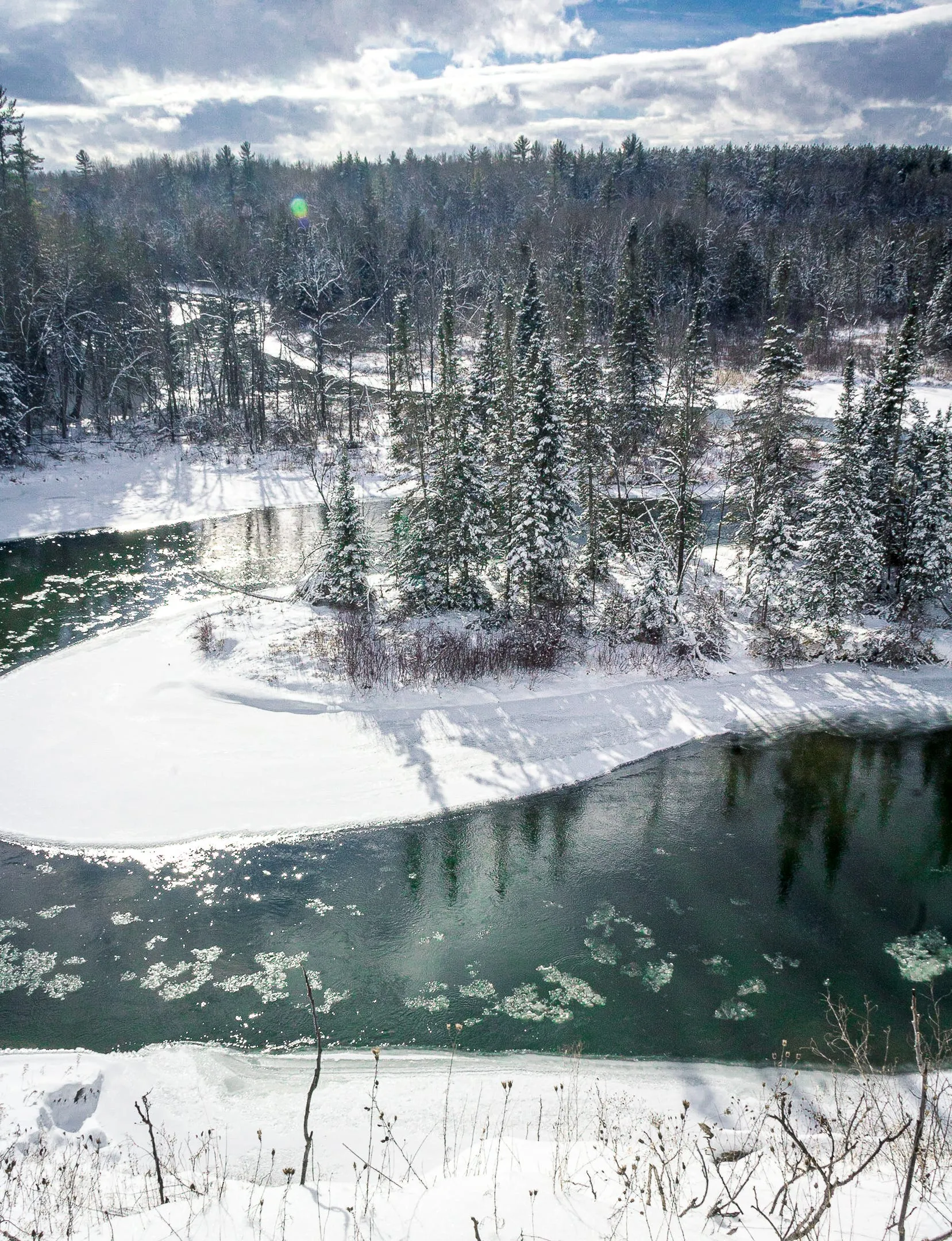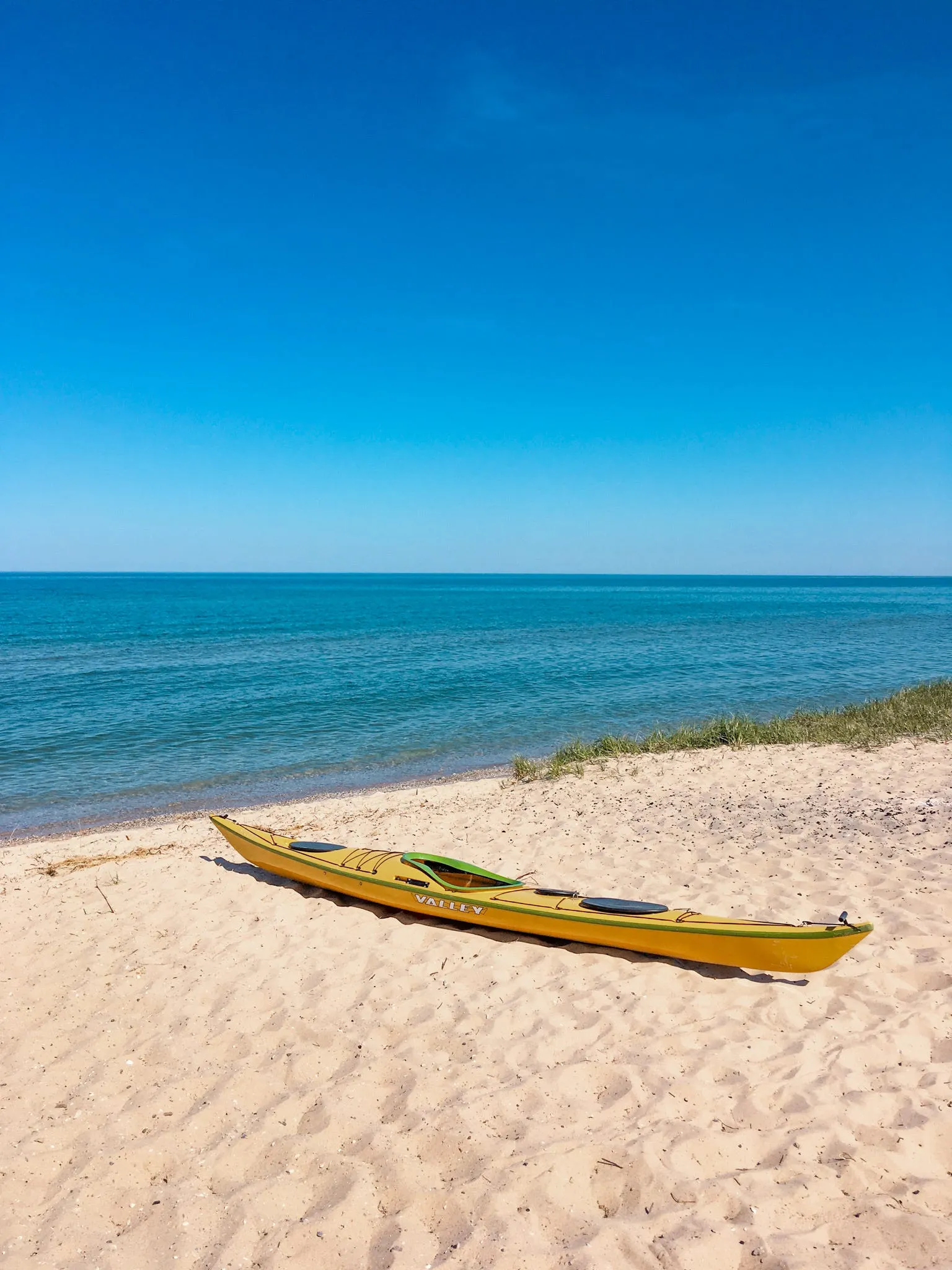When it comes to finding incredible backpacking experiences in the Midwest, look no further than backpacking lower Michigan. For anyone seeking solace in nature, a physical challenge, or simply a unique way to connect with the land, the call of the trail is undeniable. Backpacking offers a deeper immersion than a day hike, allowing you to carry your world on your back and truly live within the landscape, even if just for a night or two.
Often overlooked compared to mountainous regions, the Lower Peninsula of Michigan holds a quiet, unique beauty perfect for backpacking. It offers diverse terrain from rolling dunes and sandy beaches to dense forests and river valleys. These trails provide not just physical journeys but pathways into the natural and cultural heart of this beautiful state. Whether you’re a seasoned thru-hiker or planning your first overnight trip, backpacking lower michigan presents rewarding opportunities for adventure and discovery.
Why Choose Lower Michigan for Your Next Backpacking Trip?
Lower Michigan offers a distinct backpacking environment. While you won’t find towering peaks, you’ll discover a different kind of challenge and beauty. The trails often wind through dense, mature forests, alongside pristine lakes and rivers, and occasionally crest sandy dunes offering breathtaking views of the Great Lakes.
The relatively gentle elevation changes make many trails accessible, though distance and terrain can still provide a significant test. The abundance of water sources (lakes and rivers, require filtering) adds practicality to route planning. Furthermore, the feeling of solitude, especially outside peak season, can be profound, allowing for true connection with nature.
Top Backpacking Trails in Lower Michigan
Lower Michigan is home to several celebrated backpacking routes, each offering a unique experience. From popular loops to remote island adventures, there’s a trail waiting to be explored.
The Iconic Manistee River Trail Loop
Perhaps the most well-known destination for backpacking lower michigan is the Manistee River Trail (MRT) Loop. Located near Mesick, this roughly 23-mile loop combines the Manistee River Trail on the south side of the river with a section of the North Country Trail on the north side.
This loop is popular for good reason. It features picturesque views of the Manistee River, several designated rustic campsites, and the impressive Little Mac Suspension Bridge. The varied terrain includes climbs and descents along the river valley, offering a good workout and changing scenery. Many consider it one of the best backpacking trails in michigan.
 Suspension bridge over a wooded riverA footbridge crosses a winding river, showcasing the forested banks typical of the area.
Suspension bridge over a wooded riverA footbridge crosses a winding river, showcasing the forested banks typical of the area.
However, the MRT’s popularity means it can be extremely crowded, especially on weekends from spring through fall. Finding an open campsite can be challenging, and the atmosphere can sometimes feel less like a wilderness retreat and more like a social gathering. It’s a fantastic first-time backpacking route for its well-maintained trails and clear loop structure, but experienced backpackers seeking solitude might look elsewhere or plan for off-peak times. For more specific details on this trail, you can check out resources focused on backpacking manistee river trail.
Sand Lakes Quiet Area: A Beginner-Friendly Option
For those seeking a less crowded, potentially shorter option for backpacking lower michigan, the Sand Lakes Quiet Area near Traverse City offers a viable alternative. This park features sections of the North Country Trail and several small, scenic lakes with sandy bottoms.
It’s a beautiful location for a moderate hike or trail run, and the lakes provide lovely spots for swimming. There is at least one designated hike-in campsite, making it a possible introductory backpacking location. However, be warned: the presence of standing water in the sandy lakes can lead to a significant mosquito population, particularly during peak summer months.
Camping here is best recommended in late summer or early fall after the primary bug season has passed. The trails here are generally less strenuous than the full Manistee River Loop, offering a more relaxed overnight experience.
The Remote Beauty of the Manitou Islands
For a truly unique and challenging backpacking lower michigan experience, the Manitou Islands within the Sleeping Bear Dunes National Lakeshore are unparalleled. Reaching either North or South Manitou Island requires a ferry ride, immediately adding an element of adventure and remoteness. These islands offer a rugged, primitive backpacking environment unlike anything else in the Lower Peninsula.
South Manitou Island is the more developed of the two, with designated rustic campgrounds and a network of hiking trails exploring old settlements, a lighthouse, and the shipwreck of the Francisco Morazan. Distances between points of interest range from 1 to 4 miles, making it suitable for shorter trips or those new to island backpacking. Reservations for campsites and the ferry are required.
 Tent set up near a sandy beach by calm waterA tent rests on a patch of sand near the water’s edge, suggesting a beachside camping spot on a remote island.
Tent set up near a sandy beach by calm waterA tent rests on a patch of sand near the water’s edge, suggesting a beachside camping spot on a remote island.
North Manitou Island offers a more remote and primitive backpacking experience. With 23 miles of trails and mostly dispersed camping opportunities, it caters to those seeking true solitude. The island features dunes, an inland lake, and ghost towns. Open fires are prohibited on North Manitou, and backpackers must follow strict regulations regarding permits, fees, and Leave No Trace principles. Checking the National Park Service website for Sleeping Bear Dunes is essential for planning a trip to either island, as rules and conditions can change.
Planning Your Lower Michigan Backpacking Adventure
Successful backpacking lower michigan requires careful planning. Understanding the unique aspects of the region will enhance your trip and ensure your safety.
Best Time to Go Backpacking in Lower Michigan
The ideal time for backpacking in Lower Michigan largely depends on your preferences. Spring brings blooming wildflowers and fewer crowds, but trails can be muddy and insects may emerge.
Summer is the warmest season, perfect for swimming in lakes, but it also brings peak crowds and the highest concentration of mosquitoes and biting flies, especially near water sources. Fall offers stunning foliage and cooler temperatures, making it a popular choice for many backpackers. Winter backpacking is possible for the prepared, offering solitude and a different kind of beauty, but requires specialized gear and skills.
Permits, Regulations, and Leave No Trace
Always research the specific regulations for the area you plan to backpack. State parks often have designated campgrounds and require reservations. National Lakeshores like Sleeping Bear Dunes (for the Manitou Islands) have specific permit and reservation systems. Dispersed camping regulations vary; always check with the Michigan Department of Natural Resources (DNR) or the specific land manager before assuming you can camp anywhere.
Practicing Leave No Trace principles is paramount. This includes packing out everything you pack in, properly burying human waste away from water sources, staying on established trails, and minimizing campfire impacts (or adhering to fire bans, as on North Manitou Island).
Essential Gear Considerations
While the terrain in Lower Michigan might not demand alpine gear, specific items are crucial. Good insect repellent (and potentially a head net) is vital, especially during summer. Water filters or purification tablets are necessary as relying solely on carrying water for multi-day trips is impractical.
Rain gear is a must, as Michigan weather can be unpredictable. Layering clothing is important for managing changing temperatures. A comfortable pack, sturdy hiking boots, navigation tools (map, compass, GPS), and appropriate camping gear (tent, sleeping bag, cooking system) complete the essential list for backpacking lower michigan.
Beyond the Trail: Connecting with Local Culture
While backpacking is about immersing yourself in nature, a trip to Lower Michigan can also be an opportunity to connect with the local culture, history, and even food scene in nearby towns.
The towns surrounding these trails, like Traverse City, Empire, or Glen Arbor, offer places to resupply, grab a meal before or after your trip, and experience the local flavor. This region is famous for cherries, so indulging in some local cherry pie or other cherry products is a delicious way to engage with the area’s agricultural heritage. Understanding the history of logging, agriculture, and maritime life on the Great Lakes adds another layer to your wilderness experience. Consider spending some time exploring the charm of these towns before or after your backpacking adventure.
Frequently Asked Questions about Backpacking Lower Michigan (FAQ)
What is the best time of year for backpacking in Lower Michigan?
Generally, late spring (May-June) and fall (September-October) offer pleasant temperatures, fewer bugs, and beautiful scenery. Summer (July-August) is popular but can be hot and buggy. Winter backpacking requires significant preparation.
Are permits required for backpacking trails?
It depends on the specific location. Many state parks with designated hike-in sites require camping reservations and fees. Sleeping Bear Dunes National Lakeshore requires permits and reservations for backpacking on the Manitou Islands. Always check with the managing agency (State Park, National Lakeshore, DNR) before you go.
Is dispersed camping allowed?
Dispersed camping rules vary greatly depending on whether you are on state land, federal land (like National Forests), or within a National Lakeshore or State Park. Many popular trails only allow camping in designated sites. Always verify regulations for your chosen area.
How difficult are the trails?
Trail difficulty in Lower Michigan ranges from easy, relatively flat walks to more moderate climbs, particularly in dune areas or river valleys. Most trails are well-maintained. The primary challenge is often distance and carrying a full pack, rather than extreme elevation gain.
What wildlife might I encounter?
Lower Michigan is home to diverse wildlife including deer, small mammals, various bird species, and insects (especially mosquitoes and biting flies in summer). Black bears are present in some northern parts of the Lower Peninsula, so understanding bear safety is wise, although encounters are less common than in the Upper Peninsula.
Conclusion: Your Journey Awaits
Backpacking in Lower Michigan offers a unique and rewarding way to explore the state’s natural beauty. From the popular loop of the Manistee River Trail to the remote wilderness of the Manitou Islands, there are trails suited for various skill levels and preferences.
By planning ahead, respecting the environment, and embracing the journey, you can create lasting memories while immersing yourself in the peaceful forests and stunning waterscapes. Whether you’re seeking solitude, a challenge, or simply a break from the everyday, backpacking lower michigan is an adventure waiting to unfold. Pack your bags, hit the trail, and discover the quiet charm of Michigan’s Lower Peninsula.
